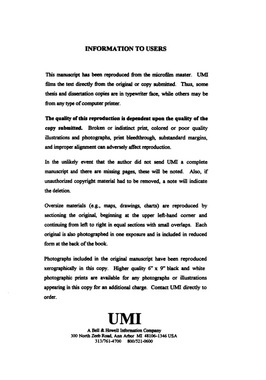| dc.contributor.author | Vargo, Stephen Louis. | en_US |
| dc.date.accessioned | 2013-08-16T12:29:51Z | |
| dc.date.available | 2013-08-16T12:29:51Z | |
| dc.date.issued | 1997 | en_US |
| dc.identifier.uri | https://hdl.handle.net/11244/5541 | |
| dc.description.abstract | Recently, Zeithaml, Berry, and Parasuraman (1993) (ZBP) have proposed a "zone of tolerance" model of perceived service quality. Its fundamental propositions are that (1) the standard of comparison is a zone which is bounded by "desired" and "adequate" service, and (2) this zone expands and contracts, as a function of transitory and enduring factors. Similar latitude models can be found in the (dis)satisfaction literature, as well as in the price evaluation literature. | en_US |
| dc.description.abstract | Contrary to the ZBP model, perceived acceptability is not bounded by minimum tolerable and desired service levels. The latter falls within the latitude of acceptability, while the former is associated with the neutral latitude. Latitude formation appears to be driven by assimilation, with standards serving as anchors. Positive behavioral intentions are consistently aligned with the latitude of acceptance; negative behavioral intentions are associated with the latitude of objectionability; no behavioral intentions are consistently associated with the neutral latitude. The existence of a latitude of objectionability above the latitude of acceptance suggests that too much of a service dimension ("hyperservice") may be as bad as too little. Implications for managing service-encounters and influencing the formation of latitudes are offered and future research directions are suggested. | en_US |
| dc.description.abstract | How consumers evaluate service-encounters has implications for the ways marketers manage these encounters. However, there is disagreement concerning the appropriate model for understanding the evaluation process. Recently, models based on ranges, or latitudes, of acceptable performance have been suggested as alternatives to the traditional disconfirmation of expectations model. | en_US |
| dc.description.abstract | The disconfirmation paradigm posits that (1) consumers compare their perceptions of an offering and/or its delivery with some standard and (2) positive and negative evaluations are directly proportional to the degree to which perceptions exceed or fall below this standard. While dominant, the disconfirmation paradigm has been heavily criticized. | en_US |
| dc.description.abstract | The present study explores the similarities and differences of these latitude models and related theoretical foundations. Particular attention is directed toward the tripartite latitude model of social judgment-involvement theory (Sherif, Sherif, and Nebergall 1965). The study employs a modified "own categories" sorting technique to explore the relationships among comparison standards (e.g., desired, deserved, minimum tolerable); latitudes of acceptability, objectionability, and neutrality; and post-evaluative behavioral intentions (e.g., negative word-of-mouth, repeat patronage) under different levels of situational criticality. Waitperson friendliness and serving response-time are the dimensions explored. | en_US |
| dc.format.extent | xix, 256 leaves : | en_US |
| dc.subject | Service industries. | en_US |
| dc.subject | Consumer behavior. | en_US |
| dc.subject | Business Administration, Marketing. | en_US |
| dc.subject | Consumers Attitudes. | en_US |
| dc.title | An investigation of latitude models of service-encounter evaluation. | en_US |
| dc.type | Thesis | en_US |
| dc.thesis.degree | Ph.D. | en_US |
| dc.thesis.degreeDiscipline | Michael F. Price College of Business | en_US |
| dc.note | Source: Dissertation Abstracts International, Volume: 58-09, Section: A, page: 3622. | en_US |
| ou.identifier | (UMI)AAI9808399 | en_US |
| ou.group | Michael F. Price College of Business | |
